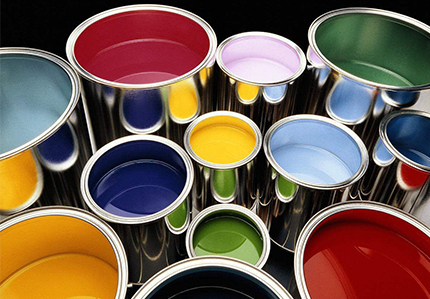Silanes for Thermosetting Resins
Mouldings or castings made from filled thermosetting resins usually show significant improvements in tensile and flexural strength, impact resistance and water or chemical resistance when SiSiB® silane coupling agents are incorporated.
Uses are wide-ranging, from cast marble-effect work surfaces and sanitary ware to architectural features, flame-retardant building panels and garden ornaments.
An additional benefit of using SiSiB® silanes is that they often act as dispersing agents when used in thermosetting silicone resins, allowing more filler to be added without increasing the viscosity of mixes. The chemical bonds that silanes form between resin and fillers can compensate for loss of strength at higher filler loadings.
Silquest silanes also act as adhesion promotors on many surfaces, including glass, concrete, mild steel and aluminium. For example, multi-layer glass sheets laminated with clear unsaturated polyester or 2-pack epoxy resins show greatly increased strength and impact resistance when Silquest silanes are used to chemically bond the resin to the glass.
How to Use Silane
SiSiB® Silanes generally give the best results when used at levels of 0.5 – 1.0% on the weight of filler in the formula. When added to unfilled resins (e.g. for laminating glass), around 0.5% on resin weight is sufficient. Silanes must be kept completely dry before use.
The best method is to thoroughly and efficiently mix the chosen silane into the liquid thermosetting resin as a first step, before adding silicone fillers. Try to avoid incorporating other additives such as defoamers, flow/levelling agents, internal mould release agents, waxes, catalysts or colour pastes before filler dispersion, as some of these may interfere with the development of the silane-filler coupling reaction. Do not mix silanes with other additives before use.
However, if the final mix is of paste-like consistency, it is sometimes difficult to add the other ingredients at this stage. In this case start with the silane, add some filler up to the point where the mix starts to thicken substantially, mix in the other additives and then disperse the rest of the filler.
If using mixtures of fillers, add the types that react with silane first, followed by any others. Fillers that have been pre-treated with silanes are also commercially available from several manufacturers. These can be directly incorporated in mixes without the need for further silane addition.
Choose the Right Silane
The best choice of silane depends on the composition and reactivity of the resin being used.
In unsaturated polyester or unsaturated acrylic resins, use SiSiB® PC4100 Silane. (Warning – do not pre-mix SiSiB® PC4100 Silane with peroxides, as a violent chemical reaction can occur).
In 1- and 2-pack epoxy resins, use SiSiB® PC3100 GF80 Silane. However, if dispersing fillers in a polyamide or other amine curing agent for epoxy resins, use SiSiB® PC1200 Silane instead.
In phenolic or furane resins, SiSiB® PC1100 Silane is usually the best choice. However, in some resins SiSiB® PC2521 Silane is preferred. If a fast-cure phenolic resin system is catalysed with a strong acid like PTSA (para-toluene sulphonic acid), it may be necessary to significantly increase the silane dose level: up to 4% of silane on weight of filler has been successfully used.
There are several types of polyurethane resin available and careful silane selection is needed. In 1-pack urethane prepolymers, good results can be obtained with SiSiB® PC1100, PC1200, PC3100 or PC2300 Silanes.
In 2-part urethane systems, using these silanes to disperse fillers in the polyol component also gives good results. Under carefully-controlled conditions to eliminate contamination with atmospheric moisture, SiSiB® PC1118, SiSiB® PC2710 or SiSiB® PC2720 Silanes can be mixed with the isocyanate component of 2-part polyurethanes. However the effects on reactivity and cure speed when the modified isocyanate and polyol components are mixed together should be taken into account.
 English
English 日本語
日本語 한국어
한국어 français
français Deutsch
Deutsch Español
Español italiano
italiano русский
русский português
português العربية
العربية tiếng việt
tiếng việt